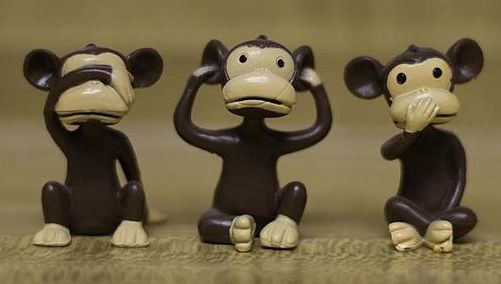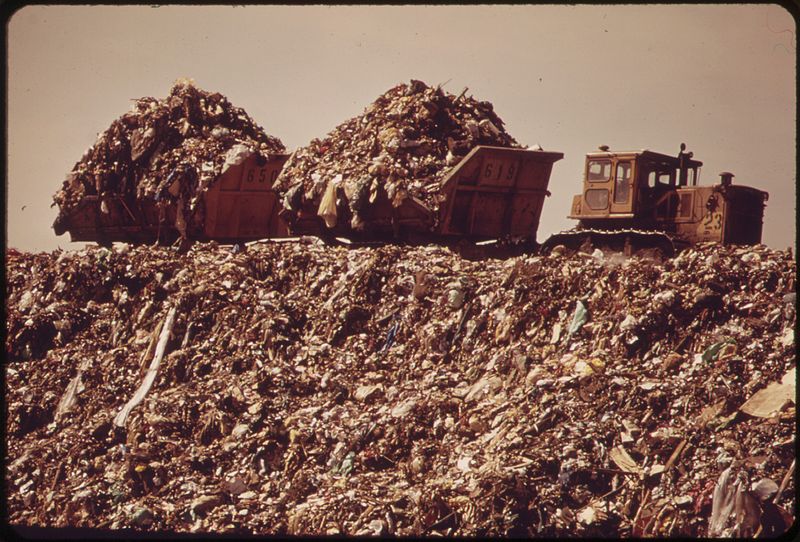 Burning fossil fuels. Rising atmospheric CO2 levels. Global warming. The 1-2-3 of climate change. As the GEICO ads say “everybody knows that!” But surveys suggest that, in fact, many people don’t understand this simple relationship.
Burning fossil fuels. Rising atmospheric CO2 levels. Global warming. The 1-2-3 of climate change. As the GEICO ads say “everybody knows that!” But surveys suggest that, in fact, many people don’t understand this simple relationship.
For example, the Yale Project on Climate Communication’s survey of people’s knowledge about climate change, published in 2010, found that almost all Americans know that coal and oil are fossil fuels, and about two-thirds know that burning them releases carbon dioxide. Still, only 45% of the respondents knew that carbon dioxide in the atmosphere traps heat and only 50% understood that human activities are the main cause of global warming.
Should you need any more evidence that Americans’ level of climate literacy is problematic, I give you a recent hearing before the House of Representatives Committee on Science, Space, and Technology, where the following exchange actually took place:
Question: (Rep. Dana Rohrabacher (R-CA)):
“At what point, at what level of CO2 does CO2 become damaging? At what level does it become harmful to human beings?”
Answer: (Presidential Science Advisor John Holdren):
“We are not interested in CO2 levels because of their direct effect on human health, but because of their effect on the world’s climate.”
Given this level of discourse, it was nice to see a clear explanation of the climatic role of carbon dioxide, in Natalie Angier’s recent article, "Too Much of a Good Thing", which appeared in the New York Times science section on September 23. What I particularly liked was how Ms Angier made this topic, so often discussed in the abstract, concrete and personal.
 Do you know how you contribute to carbon dioxide emissions? How about this vivid image: your “annual landfill contributions…are so much pocket lint compared with…the nearly 40,000 pounds a year of carbon dioxide gas that each of us pumps into the atmosphere” 40,000 pounds?!? Where could that be coming from, you might ask? Here are some of her examples: “a typical American car…belches a pound of carbon dioxide through its tailpipe for every mile driven.” And how about that flight from Chicago to Salt Lake City? “2,000 pounds...is your portion of the CO2 exhaust expelled en route by the burning of jet fuel.” Such concrete examples are great for making it clear how everyday activities that we take for granted contribute to carbon dioxide emissions.
Do you know how you contribute to carbon dioxide emissions? How about this vivid image: your “annual landfill contributions…are so much pocket lint compared with…the nearly 40,000 pounds a year of carbon dioxide gas that each of us pumps into the atmosphere” 40,000 pounds?!? Where could that be coming from, you might ask? Here are some of her examples: “a typical American car…belches a pound of carbon dioxide through its tailpipe for every mile driven.” And how about that flight from Chicago to Salt Lake City? “2,000 pounds...is your portion of the CO2 exhaust expelled en route by the burning of jet fuel.” Such concrete examples are great for making it clear how everyday activities that we take for granted contribute to carbon dioxide emissions.
Angier then tackles an aspect of climate change that seems to trip people up (ahem: Rep. Buschon, I’m talking to you): carbon dioxide makes up a tiny percentage of Earth’s atmosphere. So, how can changing levels of the gas have such dramatic effects? Indeed, carbon dioxide makes up a mere fraction of a percent of the Earth’s atmosphere: nitrogen and oxygen account for 99%. But, as Angier explains: “when sunlight strikes the earth and the earth beams back that solar energy in the form of infrared radiation, or heat, the dominant molecules of the atmosphere essentially shrug with indifference.” By contrast, “it takes an atomically more complex character like a molecule of carbon dioxide to stop the heat in its tracks.”
Angier then paints a clear picture of the carbon cycle, extending it back into deep time, when carbon dioxide from volcanic eruptions began trapping the sun’s heat and raising the Earth’s temperature from frozen to habitable. The evolution of photosynthesis meant organisms could use CO2 as fuel, turning sunlight and CO2 into sugars and other carbohydrates that serve as the basis of the food chain. (One small quibble: Angier gives the photosynthetic credit to algae and plants. But the first photosynthesizers were cyanobacteria; they alone drove the carbon cycle for millions of years, and they remain critically important players, even if they are too small to see.)
OK, so the carbon cycle is ancient. So what’s the problem now? Well, not all of the carbon transformed by photosynthesis into plants and microorganisms was consumed in real time. Much of it was buried, compressed, and gradually transformed into the fossil fuels we burn today: coal, oil, and natural gas. And now we are using that long-buried solar energy to fuel our modern lifestyles. As Angier puts it: “what worries researchers is the vertiginous pace at which humans are digging up carbon caches that were tens of millions of years in the making and tossing the gaseous end products back to the atmosphere in just a handful of decades.”
Finally, having clearly shown how we all play a part in carbon dioxide emissions, (try this phrase when you leave for work tomorrow: “Bye hon! I’m off to toss some gaseous end products!”) Angier offers some hope, and some ways that individuals can help. We’ll need national efforts like doubling the fuel efficiency of the nation’s fleet of automobiles, which alone would cut U.S. emissions by 16%, but she offers individual advice too: “take the train or ride a bike. Install thermal windows. Use a rake rather than a leaf blower.”
All good ideas, all things each of us can do—and aren’t we all much more likely to do them if we understand why they make a difference? For helping us all understand a major driver of climate change a little better, I say—thanks, Ms. Angier: well said!
Image credits:
The three monkeys: By John Snape via Wikimedia Commons
Landfill: Public Domain via Wikimedia Commons

